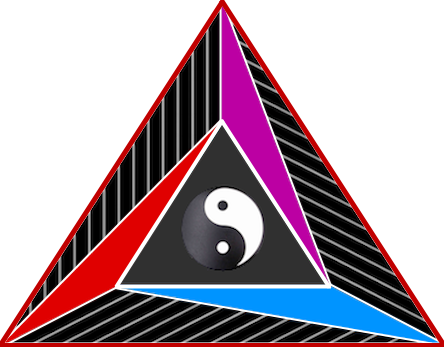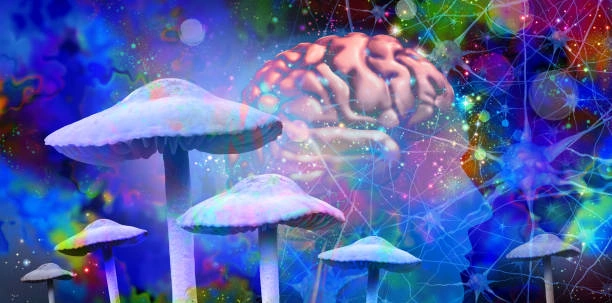
Introduction: The Allure of the Veiled Unknown
The term “occultism” encompasses a constellation of esoteric beliefs and practices dedicated to unveiling hidden cosmic truths. These traditions transcend the ordinary, delving into the extraordinary to illuminate profound philosophical questions about existence, divinity, and the fundamental fabric of reality. This exploration offers not merely knowledge, but transformation—a metamorphosis of consciousness through engagement with the unseen.
The word “occult” itself derives from the Latin “occultus,” meaning hidden or secret, reflecting the nature of these practices as explorations of knowledge typically concealed from the uninitiated. Throughout history, occult traditions have existed alongside mainstream religious and philosophical systems, sometimes in harmony, often in tension, but always offering alternative perspectives on reality’s deepest questions.
This examination traverses the rich tapestry of occult history, its philosophical foundations, the magnetic pull it exerts on seekers, and the precipices that accompany its practice. In an age of scientific materialism and technological acceleration, occult traditions continue to thrive, perhaps precisely because they address dimensions of human experience that empirical science alone cannot satisfy—the yearning for meaning, connection to the divine, and intuitive understanding of life’s mysteries.
Historical Tapestry of Occult Thought
Ancient Wellsprings: The Primordial Seeds
The roots of occultism extend deep into the soil of human civilization, where knowledge of unseen realms was sacred territory, often guarded jealously by priestly castes. These early mystics sought communion with the cosmos, the human spirit, and the divine through varied esoteric pathways.
In Mesopotamia, priest-astronomers studied celestial movements, developing sophisticated systems for divination and cosmic interpretation. Their cuneiform tablets reveal intricate rituals designed to communicate with planetary deities and harness their influences. The ziggurats themselves stood as cosmic mountains—architectural embodiments of the connection between heaven and earth, serving as conduits for divine energies.
Egypt: Crucible of Mystery Wisdom
In ancient Egypt, mystery schools served as sanctuaries of sacred knowledge, where initiates were gradually awakened to existential truths, the soul’s posthumous journey, and divine mechanics. The Osirian Mystery Cult, with its profound death-resurrection symbolism, mirrored life’s eternal cyclical nature. Texts like the “Book of the Dead” offered not mere superstition but sophisticated spiritual technology—incantations and rituals designed to navigate the soul through afterlife realms.
Egyptian priests understood the power of vibration, using sound and recitation to attune the initiate’s consciousness to specific spiritual frequencies. The temples themselves were constructed according to sacred geometrical principles, their very architecture facilitating altered states of awareness and communion with divine forces.
Hieroglyphs like the Ankh (embodying the eternal life force) and the Eye of Horus (representing divine protection and perception) functioned as more than mere symbols—they were energetic gateways, psychospiritual portals connecting initiates to subtle dimensions of being. Each hieroglyph contained layers of meaning, from the exoteric to the most profoundly esoteric, accessible only to those who had undergone the necessary purifications and preparations.
Greco-Roman Intellectual Alchemy: Philosophical Crystallization
The Greco-Roman epoch birthed philosophical innovations that profoundly influenced occult cosmology. The concept of the “logos”—divine reason permeating all existence—emerged through Platonic and Aristotelian inquiry. This intellectual ferment, coupled with Hermetic revival, catalyzed a synthesis of thought that characterized subsequent esoteric developments.
The Eleusinian and Orphic mystery traditions offered initiatory pathways that combined ritual, myth, and direct mystical experience. Participants underwent carefully structured ceremonies designed to induce altered states of consciousness, symbolically reenacting cosmic processes and divine narratives. These experiences were considered so sacred that initiates were forbidden from revealing their nature, maintaining secrecy under penalty of death.
The Pythagorean School merits special attention for its integration of mathematical principles with spiritual practice. Pythagoras and his followers perceived numbers not as mere quantitative abstractions but as living cosmic principles underlying reality’s structure. Their exploration of numerical relationships in music, astronomy, and geometry revealed harmony’s fundamental role in creation—insights that would profoundly influence subsequent Western esoteric traditions.
Hermeticism: The Divine Science
Hermeticism, attributed to the legendary sage Hermes Trismegistus, represents a cornerstone of Western esoteric tradition. The “Corpus Hermeticum” weaves Greek philosophical rigor with Egyptian spiritual insight. The Hermetic axiom “As above, so below” encapsulates a profound cosmological principle—that celestial and terrestrial realms mirror each other in perfect correspondence. This principle became foundational to numerous occult systems, positioning humanity as a microcosm reflecting the macrocosmic order.
The Hermetic texts themselves present dialogues between Hermes and disciples like Asclepius and Tat, exploring profound themes including divine creation, soul nature, and spiritual ascension. These writings posit that humans possess divine spark—an inherent divinity obscured by material existence but recoverable through spiritual discipline and knowledge pursuit.
Hermeticism’s influence extended into late antiquity through Neoplatonism, with thinkers like Plotinus and Iamblichus developing sophisticated metaphysical systems describing reality as emanating from the transcendent One through successive hypostases. These philosophical frameworks provided intellectual scaffolding for magical practices, as ritual came to be understood as a means of ascending through these emanated levels back toward divine unity.
Medieval Transmutations: Alchemy, Astrology, and Kabbalah
The medieval period witnessed a dramatic reconfiguration of occult landscapes. While Christianity’s ascendance fostered suspicion toward esoteric practices, underground currents of mystical knowledge continued to flow through dedicated seekers.
Islamic scholars preserved and expanded classical knowledge, developing sophisticated astrological and alchemical systems. Figures like Jabir ibn Hayyan (Geber) and Al-Kindi advanced both practical laboratory techniques and spiritual interpretations of alchemical processes. Their works, later translated into Latin, would profoundly influence Western esoteric traditions.
Alchemy: The Sacrament of Transformation
Alchemy transcends the superficial understanding of mere metallurgical experimentation. This sacred art represents a multilayered spiritual discipline integrating physical operations with metaphysical transformation—a bridging of material and spiritual realms through symbolic processes.
Luminaries like Paracelsus articulated an alchemical vision extending far beyond material transmutation. This Renaissance physician-mystic proclaimed: “The alchemist does not seek gold; he seeks the transformation of the soul.” This declaration illuminates alchemy’s true nature—a rigorous spiritual practice aimed at purifying consciousness and transmuting the practitioner’s very essence.
The alchemical opus magnum unfolds as an initiatory journey where practitioners systematically purify thought, emotion, and spirit. Richly symbolic alchemical manuscripts depict this transformative sequence leading toward the legendary Philosopher’s Stone—representing not merely material wealth but illuminated consciousness, mastery of desire, and harmonious integration with cosmic principles.
The alchemical process encompasses multiple phases—calcination, dissolution, conjunction, and coagulation—each corresponding to distinct transformative stages. Calcination symbolizes ego dissolution and false belief incineration; dissolution represents the dissolution of rigid mental structures, allowing fluid understanding to emerge. Conjunction brings together purified opposites in a sacred marriage, while coagulation stabilizes the transformed consciousness in a new, higher configuration. These operations involve elaborate rituals and contemplative practices designed to facilitate inner alchemical transmutation—transforming leaden ignorance into golden wisdom.
The laboratory itself becomes a sacred space where the material and spiritual realms intersect. The alchemist’s vessels, furnaces, and substances mirror the human body, emotions, and consciousness. Each procedure performed on physical matter simultaneously affects the practitioner’s inner landscape, creating parallel transformations on multiple planes of existence.
Alchemical philosophy draws from ancient wellsprings, integrating mysticism, celestial observation, and natural philosophy. Alchemists perceived nature as a mirror of interior reality, recognizing the inextricable connection between cosmos and psyche. This holistic perspective infused every natural phenomenon with symbolic significance, suggesting that understanding natural processes simultaneously unlocked soul mysteries.
Alchemy ultimately serves as existence’s transformative metaphor—a sacred path toward self-realization and truth-seeking. Contemporary researchers exploring alchemical symbolism and procedures embark on a dual expedition: outward toward natural investigation and inward toward spiritual refinement. The alchemical tradition endures as transformation’s living legacy, inspiring those seeking deeper self-understanding and cosmic placement.
Kabbalistic Illuminations
Kabbalah, Judaism’s mystical heart, emerged as another crucial tributary feeding Western esoteric thought. Engaging the Torah’s mystical dimensions, Kabbalistic teachings introduced essential cosmological frameworks including the Sephirot (ten divine emanations) and the Tree of Life diagram. This symbolic structure served as both cosmic mapping and blueprint of divine-human relationship.
The Zohar, Kabbalah’s central text, appeared in 13th century Spain, offering profound mystical commentary on Torah scriptures. Its elaborate symbolism explores divine attributes, creation processes, and soul destiny. Kabbalists developed sophisticated meditative techniques centering on Hebrew letters—perceived not as mere linguistic symbols but cosmic creative forces through which divine energy manifests reality.
Kabbalistic masters like Isaac Luria developed sophisticated cosmological systems explaining creation, divine contraction (tzimtzum), and reality’s metaphysical architecture. Lurianic Kabbalah introduced the concept of tikkun olam—cosmic restoration through righteous action and spiritual practice—positioning human spiritual work as essential to universal healing and divine reunion.
Later scholars like Gershom Scholem reawakened interest in these mystical teachings, demonstrating Kabbalah’s enduring influence on modern occult systems. Christian Kabbalists adapted Jewish esoteric teachings into frameworks compatible with Christian theology, creating syncretic systems that profoundly influenced Renaissance magical traditions and subsequent occult developments.
Renaissance Awakening: Esoteric Rebirth
The Renaissance heralded classical knowledge’s revival, igniting renewed fascination with occult traditions. Visionaries like Giovanni Pico della Mirandola and Marsilio Ficino synthesized ancient wisdom with contemporary thought, emphasizing humanity’s capacity to unlock inherent divine potential through intellectual and spiritual discipline.
Ficino’s Platonic Academy in Florence became a crucible for esoteric thought, producing translations of Platonic dialogues, Hermetic texts, and Orphic hymns. These works circulated among educated elites, catalyzing renewed interest in ancient wisdom traditions and their practical applications. Ficino himself developed sophisticated theories connecting astrology, music, and medicine—understanding cosmic influences as energetic forces that could be harmonized through appropriate ritual and lifestyle practices.
John Dee, court astrologer to Queen Elizabeth I, advanced magical practices through his Enochian system—a complex methodology for communicating with angelic intelligences. Working with scryer Edward Kelley, Dee recorded elaborate angelic conversations and received instruction in a celestial language purportedly spoken before the Fall. This Enochian magic would profoundly influence subsequent magical traditions, particularly through its adoption by later occult organizations.
Rosicrucian Mysteries
The Rosicrucian movement’s emergence in the early 17th century marked another watershed in occult evolution. This esoteric fraternity claimed possession of transformative knowledge capable of healing civilization’s wounds and ushering a new enlightenment era. Manifestos like the “Fama Fraternitatis” articulated this vision, advocating hidden truth pursuit through scholarly dedication and internal transformation.
The manifestos described a mythical founder, Christian Rosenkreuz, who supposedly traveled throughout the Middle East, studying with Arab sages and Eastern masters before establishing the Rosicrucian Order. The brotherhood’s principles emphasized selfless service, religious tolerance, and harmonization of scientific and spiritual knowledge—ideals that resonated with Enlightenment values while maintaining connection to ancient wisdom traditions.
Rosicrucian doctrine integrated alchemical, Kabbalistic, and Hermetic elements into a comprehensive spiritual system emphasizing both personal enlightenment and planetary healing. This synthetic approach established foundations for subsequent mystical and magical explorations in following centuries.
Modern Occult Renaissance: 19th and 20th Century Developments
The late 19th and early 20th centuries witnessed an unprecedented occult revival, with diverse esoteric schools and movements flourishing across Western societies. This renaissance coincided with scientific materialism’s rise and traditional religious authority’s decline, perhaps offering spiritual seekers alternative frameworks for meaning and transcendence.
Eliphas Lévi and Magical Revival
Alphonse Louis Constant, better known by his Hebrew name Eliphas Lévi, played a pivotal role in revitalizing Western magical traditions. His works, including “Dogme et Rituel de la Haute Magie” (Dogma and Ritual of High Magic), synthesized diverse esoteric currents into a coherent magical system. Lévi’s famous illustration of Baphomet and his elaboration of the Tetragrammaton’s mysteries provided powerful symbols and concepts for subsequent occultists.
Lévi emphasized magic as a spiritual science rather than superstition, articulating principles of correspondence and imagination that would influence generations of practitioners. His understanding of the astral light—a subtle energetic medium connecting all things—provided theoretical foundation for practical magical operations, from ritual invocation to clairvoyant perception.
Theosophical Synthesis
Helena Blavatsky’s Theosophical Society, founded in 1875, championed comparative religious, philosophical, and scientific study. Blavatsky’s monumental works—”Isis Unveiled” and “The Secret Doctrine”—established connections between diverse spiritual traditions, postulating an underlying unity transcending cultural expressions.
Blavatsky claimed initiation into ancient mystery traditions and communication with ascended masters—spiritually advanced beings guiding humanity’s evolution. Her writings explored cosmic evolution, describing elaborate cycles of manifestation and complex hierarchies of spiritual beings. These teachings drew from Hindu and Buddhist concepts while incorporating Western esoteric elements, creating a syncretic spiritual framework that appealed to intellectuals disillusioned with conventional religion and materialistic science.
Theosophy introduced or popularized key metaphysical concepts including reincarnation, karma, and spiritual hierarchies—advanced beings guiding humanity’s evolution. This movement attracted numerous luminaries including Aldous Huxley, W.B. Yeats, and Annie Besant, profoundly influencing modern spiritual thought.
Golden Dawn: Ceremonial Magic Revived
The Hermetic Order of the Golden Dawn, established in Victorian England, became perhaps history’s most influential Western magical organization. Its founders—Samuel Liddell MacGregor Mathers, William Wynn Westcott, and others—synthesized Kabbalah, tarot, astrology, and ceremonial magic into a comprehensive spiritual system.
The order’s elaborate initiatory curriculum provided systematic training in magical theory and practice. Members progressed through grades corresponding to the Kabbalistic Tree of Life, mastering visualization techniques, ritual procedures, and symbolic attributions. The Golden Dawn’s teachings encompassed divination methods, astral travel, creation and consecration of magical tools, and invocation of spiritual forces—all governed by precise correspondences between colors, divine names, elemental powers, and celestial bodies.
Membership included cultural luminaries like Aleister Crowley, W.B. Yeats, and Dion Fortune, who explored intricate ritual practices designed for spiritual empowerment. The Golden Dawn emphasized initiatory processes, psychospiritual development, and symbolic engagement for accessing deeper consciousness layers. Though the original order relatively quickly fractured, its teachings spread through numerous derivative organizations and publications, establishing ceremonial magic’s modern foundation.
Aleister Crowley and Thelema
No discussion of modern occultism would be complete without acknowledging Aleister Crowley’s controversial but undeniably influential contribution. After breaking with the Golden Dawn, Crowley developed his own magical system, Thelema, centered on the dictum “Do what thou wilt shall be the whole of the Law.” This philosophy emphasized discovering and fulfilling one’s true purpose or “True Will” in alignment with cosmic principles.
Crowley’s extensive writings, including “Magick in Theory and Practice” and “The Book of the Law,” detailed elaborate ritual procedures and philosophical principles. His integration of Eastern tantric practices with Western magical traditions created innovative approaches to consciousness transformation. Despite his deliberately provocative public persona and notorious personal excesses, Crowley’s systematic approach to magical practice and his emphasis on scientific documentation of results influenced countless subsequent practitioners.
Philosophical and Spiritual Dimensions
The Pursuit of Hidden Knowledge
Occultism’s heart pulsates with the quest for veiled knowledge—a pursuit guided by conviction that uncovering existence’s deeper truths catalyzes personal illumination. This knowledge-seeking parallels various philosophical traditions positing deeper realities beneath phenomenal surfaces.
Occult traditions distinguish between different types of knowing. Exoteric knowledge—accessible through ordinary intellectual faculties—provides foundation for deeper understanding but remains incomplete. Mesoteric knowledge requires dedicated study and initiation into specific traditions, offering systematic frameworks for interpreting reality’s hidden dimensions. Esoteric knowledge represents direct experiential realization transcending conceptual understanding—the ultimate goal of occult practice.
Gnosis: Experiential Illumination
Within numerous occult traditions, “gnosis” signifies direct experiential knowledge transcending intellectual understanding. Carl Jung recognized this knowledge mode as arising from unconscious engagement and archetypal symbols. Practitioners employ meditation, dreamwork, and sacred text contemplation to access this gnosis—yielding profound insights into self and universe that conventional epistemological approaches cannot provide.
Gnostic traditions historically emphasized this direct knowing as salvation pathway, contrasting with faith-based approaches. Contemporary occultists continue this emphasis, developing techniques for inducing altered consciousness states facilitating direct apprehension of spiritual realities. These practices include visualization exercises, breath control methods, sacred sound utilization, and ritual drama—all designed to bypass ordinary cognitive processes and activate intuitive faculties.
Symbolic Languages and Archetypal Resonance
Within occult practice, symbols function as reality’s hidden dimensions’ gateways, facilitating profound spiritual awakening. These symbols contain multivalent meanings resonating across personal and collective consciousness layers. Drawing from Jungian psychology, we recognize archetypes—universal symbols residing within humanity’s collective unconscious. These manifest through literary, mythological, and religious motifs, connecting individuals to shared human experience across historical epochs.
Effective occult practice requires developing symbolic literacy—understanding how symbols operate on multiple consciousness levels simultaneously. A pentagram, for instance, represents elemental forces (earth, air, fire, water, spirit), human microcosm (head, limbs, and spiritual essence), and mathematical principles revealing nature’s hidden patterns. Through contemplating and ritually engaging such symbols, practitioners activate corresponding inner realities, facilitating consciousness transformation.
Sacred Geometry: The Mathematical Foundation of Creation
Sacred geometry represents another crucial symbolic language within occult traditions. From the Flower of Life to the Vesica Piscis, these geometric patterns reveal fundamental creation principles. Practitioners study these forms not merely as abstract mathematical concepts but as living expressions of cosmic intelligence manifest throughout nature. Through contemplating these forms, constructing them in ritual contexts, and meditating upon their significance, occultists seek to align personal consciousness with universal creative principles.
The Golden Ratio (approximately 1.618), found throughout nature’s growth patterns, represents divine proportion embodying harmony and balance. The Fibonacci sequence, closely related to this ratio, reveals mathematical elegance underlying natural forms from nautilus shells to pine cone spirals. By contemplating these mathematical relationships, occultists perceive divine intelligence operating through natural law—a perspective bridging scientific observation and spiritual reverence.
Tarot: Mirror of Consciousness
Among potent symbolic systems, tarot stands preeminent as self-discovery and introspection’s dynamic vehicle. Each card encapsulates multifaceted meanings, inviting practitioners into existence’s labyrinthine complexities and psyche’s mysterious depths. The Major Arcana particularly represents essential psychospiritual transformation stages, offering an initiatory roadmap through life’s journey.
The tarot’s structure itself embodies profound cosmological principles. The Major Arcana’s twenty-two cards correspond to Hebrew alphabet letters and paths connecting Sephiroth on the Kabbalistic Tree of Life. The four suits (Wands, Cups, Swords, Pentacles) represent elemental powers (Fire, Water, Air, Earth) and their manifestation through human experience. This multilayered correspondence system enables tarot to function as a comprehensive model of consciousness, capable of illuminating complex psychological processes and spiritual dynamics.
Emblematic cards like The Fool symbolize beginnings and limitless potential; The Magician embodies manifestation’s creative power; The High Priestess represents intuitive wisdom and mystery’s guardianship. The Death card signifies transformation and regeneration, while The World represents completion and integration. Engaging tarot facilitates not merely self-reflection but profound connection to inner wisdom, unveiling hidden truths beneath conscious awareness.





